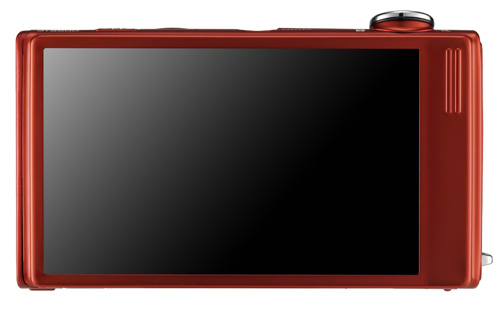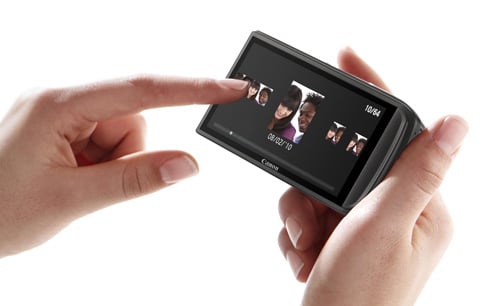Original URL: https://www.theregister.com/2010/08/11/grouptest_touchscreen_compact_cameras_buyers_guide/
Buyer's Guide: Touchscreen Compact Cameras
Finishing touches
Posted in Personal Tech, 11th August 2010 07:02 GMT
Group Test Most camera touchscreens are around 3.5in in size with the best being large, clear, bright and highly responsive, but not overly sensitive. Most touchscreens use TFT LCD displays, although Active Matrix OLED (AMOLED) technology appears on compacts too.
The advantages of OLED technology over LCD are that the screens can be made even thinner, and there is no need for a backlight or colour filter system. That said, in my tests, LCD screens were easier to view when shooting in bright sunlight. In theory, cameras using OLED screens should be less power-hungry than LCD screens, but I didn’t notice a significant difference in battery performance.

The touchscreens used in cameras are designed for single-touch operation, so iPhone-type multi-touch functions like “pinching” an image with thumb and finger to change its size, are not available. This is no great loss, and in fact, there are very few occasions when multi-touch operation would be useful on a camera - and lots of times when it would be hindrance – would you really want to adjust the ISO speed and switch to movie mode at the same time?
It’s interesting to note that manufacturers have adopted different approaches when it comes to touchscreen technology. Some have gone the whole hog and made almost all camera operations touch-controlled, while others offer a mix of buttons and touchscreen icons.
It goes without saying that not all touchscreens are equal when it comes to functionality or ease of use. Some touchscreens are less responsive than others and some manufacturers even provide a tiny stylus or fob to improve responsiveness. At least one model allows users to calibrate the touchscreen for improved operation.
At their simplest, touchscreens replace buttons with screen-based icons, but many touchscreens offer much more than this, for instance, allowing users to activate spot focus mode by tapping an object on the screen.
Even more sophisticated systems use a touch-shutter system, whereby you simply tap an on-screen object, and the camera automatically focuses and takes the shot. Others use finger-controlled slider displays for adjusting parameters such as exposure compensation. Many touchscreens also recognise gestures for various playback operations, such as scrolling, deleting, tagging, zooming or activating a slideshow.

When considering a touchscreen camera, check out screen resolution – are the icons clear? And also take a close look at the screen design – is the screen cluttered with icons? Is it easy to read in sunlight? Does the screen get marked easily?
The best touchscreens hide many icons by using tabs (touch the tab to see the hidden icons and tap it again to hide them), or even better, by letting you customise the icon display. Also examine the menu arrangement – is it easy to use or does it have annoying features, like taking you out of the menu mode as soon as you make an adjustment? Is there a back-to-previous screen option or a clearly-marked exit icon?
Given the numerous quirks – don't expect to get far with gloves on – more than anything, if you are going to purchase a touchscreen camera, you really need to get hands-on-experience before making your choice.
Next: Canon Ixus 210
Touchscreen Compact Camera Group Test